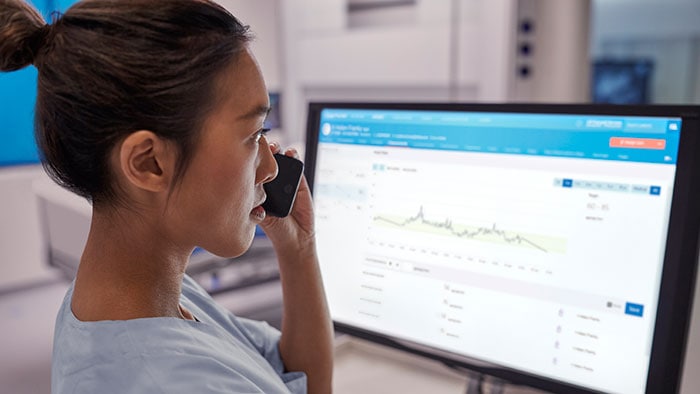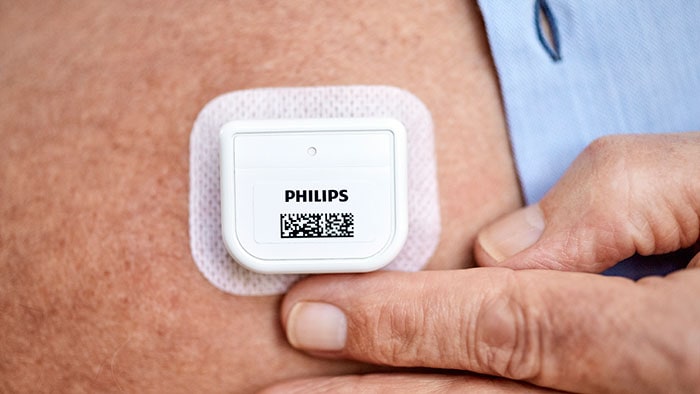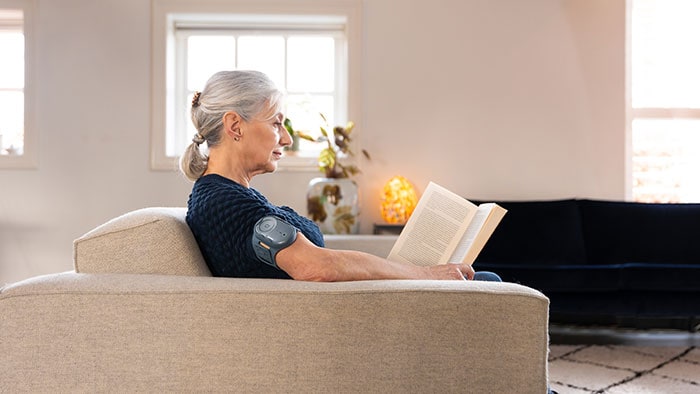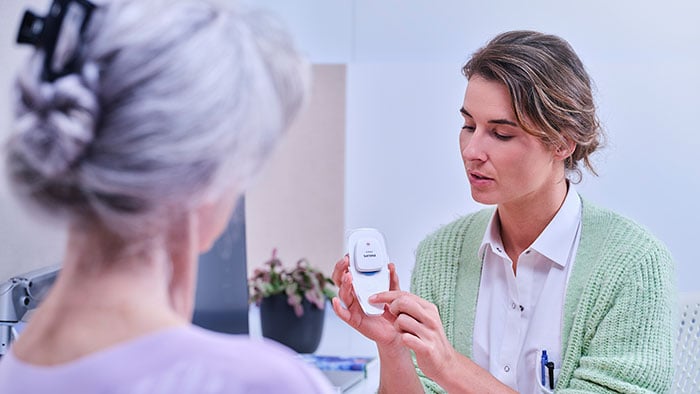Philips and smartQare partner to automate and simplify continuous patient monitoring in and out of the hospital
Wearable biosensors backed by industry-leading monitoring platforms help to reduce clinical workload and length of patient hospital stay [1,2,3]
Apr 04, 2024 | 3 minute read
Amsterdam, the Netherlands – Royal Philips (NYSE: PHG, AEX: PHIA), a global leader in health technology, today announced a strategic partnership to integrate smartQare’s advanced solution, viQtor, with Philips’ world-leading clinical patient monitoring platforms. This collaboration aims to enable the next generation of continuous patient monitoring both in and out of the hospital, starting in Europe.
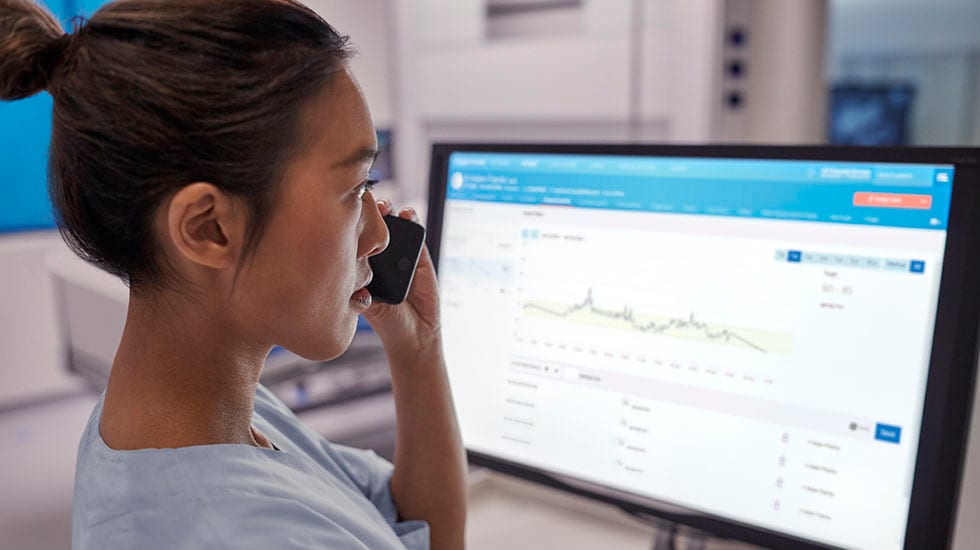
The role of hospitals is rapidly changing. Staff shortages, aging populations, and rising healthcare costs have triggered a demand in the healthcare community to do more with less. Thanks to wearable biosensors, continuous monitoring has emerged as a solution to address these challenges, helping to reduce staff workload [2] and length of patient stay [3].
But implementation can be challenging, especially when devices can’t talk to each other, and the flow of patient data is disrupted across care settings. The new Philips-smartQare partnership aims to enable open communication between sensors and systems, helping to ease the complexity of continuous monitoring by making data and decision support accessible via easy-to-use platforms, regardless of whether the patient is still hospitalized or recovering at home.
“At Philips, we recognize the need for systemic change, driven by the entirety of the health technology industry. By opening our world-class monitoring platform to other companies like smartQare, we can create a patient-monitoring ecosystem that helps to give time back to the provider to work on what matters and care for their patients confidently,” said Christoph Pedain, Business Leader, Hospital Patient Monitoring at Philips. “Hospitals and health systems can then balance the need to standardize and personalize care across care settings and to help enhance workflows, care delivery, and patient safety.”
Combining leading biosensors and platforms into a practical, readily available solution helps to address growing challenges to healthcare systems around the world brought on by increasing demand and fewer resources.
“Combining leading biosensors and platforms into a practical, readily available solution helps to address growing challenges to healthcare systems around the world brought on by increasing demand and fewer resources,” said Walter van Kuijen, CEO of smartQare. “At smartQare we are committed to unlocking the power of innovation to ensure future accessibility and affordability of healthcare systems, globally.”
“With the advent of AI and the introduction of more and specialized wearables, we can further improve patient monitoring inside and outside the hospital,” said prof. dr. Arthur Bouwman, anaesthesiologist at Catharina Ziekenhuis Eindhoven and professor of perioperative monitoring and clinical decision support at Eindhoven University of Technology. “We have learned a lot from the introduction of the HealthDot. As we continue to innovate, an open ecosystem and collaboration between companies like Philips and smartQare will support an easy flow of patient data and help us to improve care pathways to ensure we can deliver high-quality care for patients.”
As part of the partnership agreement, smartQare will acquire Philips’ Healthdot business, combining the wearable biosensor with smartQare’s patient monitoring solution, viQtor via a single digital platform. Going forward, Philips and smartQare will jointly offer the integrated remote patient monitoring solution to healthcare providers and patients.
An open monitoring ecosystem benefits the health system and its patients
By moving away from proprietary standards and closed systems to an open patient monitoring infrastructure, clinicians are free to use third-party devices and wearables of choice that communicate effortlessly across the platform. This open ecosystem approach will offer clinicians the flexibility to monitor patients before, during and after hospitalization for a unified and seamless patient view.
Sources [1] van der Stam, Mestrom et. al. (2022) A wearable patch based remote early warning score (REWS) in major abdominal cancer surgery patients; ESJO, vol. 49 issue 1, Sept 1 2022. https://doi.org/10.1016/j.ejso.2022.08.034
[2] Surgical Ward Innovation: Telemonitoring Controlled by Healthdot (SWITCH), 2023. https://clinicaltrials.gov/study/NCT05956210 (accessed 4/1/2024)
[3] van Ede ES, Scheerhoorn J, Buise MP, Bouwman RA, Nienhuijs SW (2023) Telemonitoring for perioperative care of outpatient bariatric surgery: Preference-based randomized clinical trial. PLoS ONE 18(2): e0281992. https://doi.org/10.1371/journal.pone.0281992
